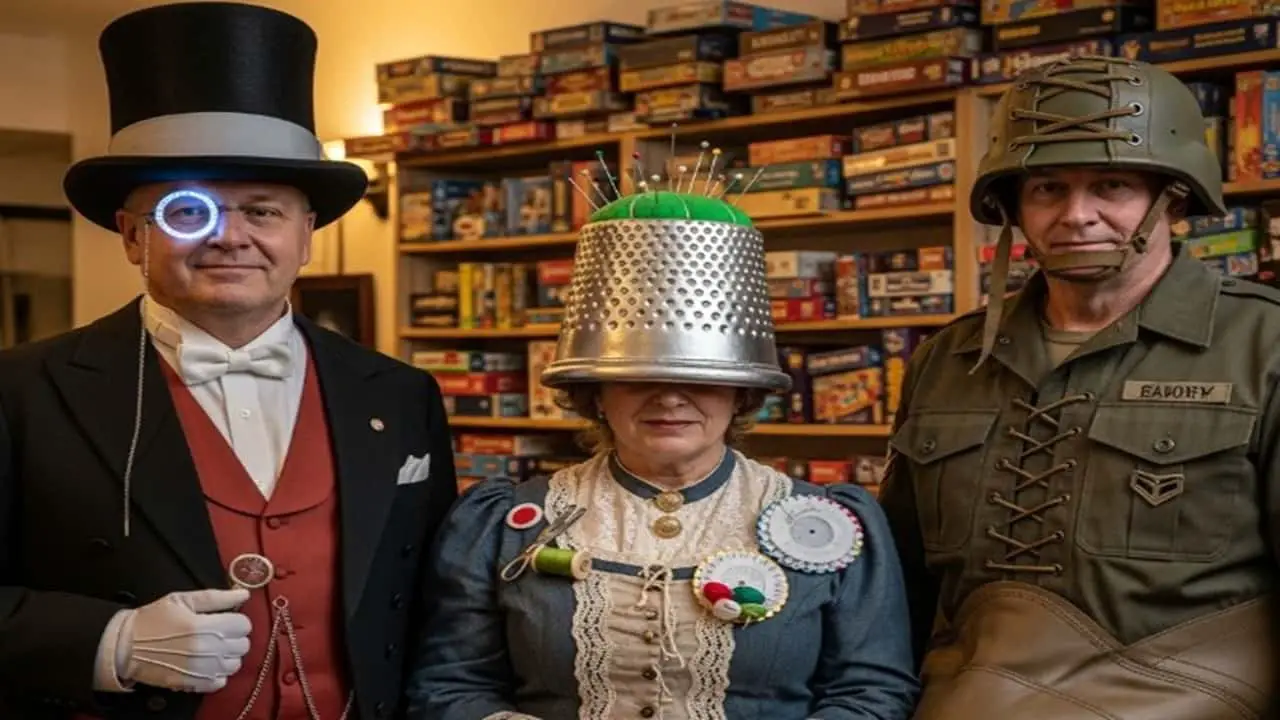Artificial flowers have come a long way from looking tacky and lifeless to becoming stunning replicas of their natural counterparts.
They offer the advantage of beauty that never fades, but just like real plants, they do require some TLC to maintain their charm.
Whether you’re a proud owner of vibrant silk sunflowers or elegant faux roses, knowing how to care for artificial flowers and revive old ones is crucial to ensure they remain captivating decorations in your home or office.
In this article, you will learn how to rekindle the vibrancy of your artificial blooms and give them a new lease on life.
So, if you’re ready to sprinkle a little magic on your faux botanical beauties, let’s dive right in!
Table of Contents
Cleaning Artificial Flowers: Keeping Them Pristine
Artificial flowers come in various materials, and regular cleaning is essential to maintain their pristine appearance. Treat them as you would soft furnishings, as recommended by Tiffany Giudicelli, creative director at Bloom.
Here’s how to keep your artificial flowers looking their best.
Weekly Dusting: A Must-Do
Include your artificial flowers in your regular cleaning routine.
Dust them off gently with a soft cloth or feather duster every week.
This step is especially crucial for white or lighter blooms that are prone to showing marks.
Tackling Stains: Baby Wipes and Specialist Cleaners
For stubborn stains, try using a baby wipe, the gentle cleaning solution can work wonders.
In case of more challenging marks, investing in a specialized cleaner, like Bloom’s Silk Flower Wash, can provide a thorough cleanse.
Use it once a month to remove dust buildup effectively.
Pro Tip: To prevent dust from settling on your artificial flowers, consider displaying them in areas away from frequently opened windows or high-traffic spots.
Tackling Stubborn Stains: Lemon Juice and Avoiding Hot Water
Stubborn stains are no match for the power of natural ingredients.
Lemon juice, renowned for its cleaning properties, can be applied to a cloth and gently rubbed onto the affected areas.
However, exercise caution and avoid using hot water or aggressive scrubbing, as it could damage delicate parts or weaken adhesive bonds that hold the plant together.
Addressing Tarnish and Rust: Vinegar-Water and Practical Solutions
Tarnished areas can be a concern for artificial plants, especially those with metallic components.
For tarnish removal, a mixture of vinegar and water can work wonders.
Gently apply this solution using a cloth, and watch as the tarnish diminishes.
If the rust is on metal components, it’s wise to carry out this process outdoors.
Airflow Cleaning: The Cold Setting Hairdryer Technique
To blow away dirt from hard-to-reach spots or intricate areas, try using the cold setting of your hairdryer.
However, exercise caution and make sure your artificial plants can withstand this method, as some delicate versions might be adversely affected.
Also Read: Can you wash artificial flowers in washing machine?
Artificial Plants and Trees
Artificial plants and trees add a touch of timeless elegance to any space.
Here’s how to care for them and ensure they maintain their allure:
Top-to-Bottom Leaf Wiping: A Delicate Task
To keep your artificial plants looking lush and vibrant, take a clean, soft, dry cloth and gently wipe down each leaf one at a time.
Start from the top and work your way down, ensuring that every leaf receives equal attention.
This step helps eliminate dust and maintains the plant’s overall appearance.
Ensuring Uniform Sun Exposure: Avoid Fading
Direct sunlight can cause fading and discoloration in artificial plants.
Before placing your faux greenery near a window, check the care label to determine if it’s UV resistant. If it is, enjoy the natural light. If not, consider positioning the plant away from direct sunlight to prevent any adverse effects.
Diluted Fertilizer and Essential Oils
If you seek to elevate the authenticity of plastic plants, the occasional application of diluted liquid fertilizer can mimic the nutrients real plants receive.
Moreover, a touch of essential oil can infuse a refreshing aroma into your space.
Rotation for Balanced Fading: Monthly Adjustment
Artificial trees exposed to UV rays might experience fading over time.
To ensure even fading and prevent noticeable color disparity, consider rotating your artificial tree or topiary once a month.
This simple practice can help maintain a more uniform appearance and prolong the lifespan of your beloved faux greenery.
Storage: Protecting Your Greenery
If you need to store your artificial plants or flowers temporarily or during a season change, follow these guidelines to ensure they remain in good condition:
Dust and Clean: Pre-storage Preparation
Before storing your artificial plants, make sure to give them a thorough dusting and cleaning.
This step removes any accumulated debris and ensures a fresh start when you unpack them.
Use Proper Containers: Preserve Shape and Structure
When storing or transporting your artificial plants and flowers, use spacious containers that allow them to maintain their shape.
Avoid crushing or bending the foliage by providing ample space inside the storage container.
Avoid Extreme Temperatures: Cool and Dry Spaces
Store your artificial plants and flowers in a cool and dry environment.
Extreme temperatures can damage the materials, causing them to warp or fade.
Avoid areas exposed to direct sunlight, as this can also impact their color and integrity.
Refreshing: Reviving Artificial Greenery
Over time, the appearance of your artificial plants and flowers might need a little pick-me-up.
Here’s how you can refresh them and restore their beauty:
Fluffing and Shaping: Restoring Volume and Form
If the foliage appears flattened or out of shape, gently fluff and shape the leaves or petals to restore their volume.
Manipulate the stems and branches to achieve a more natural and lifelike appearance.
Touch-Up: Color Restoration and Enhancements
If the color of your artificial plants has faded or you’d like to enhance certain aspects, consider using fabric spray paint or floral spray dye.
Follow the manufacturer’s instructions and apply the colorants to achieve the desired effect.
Pro Tip: When using spray paint or dye, protect the surrounding area with newspapers or plastic sheets to avoid unintended staining.
Choosing High-Quality Artificial Plants and Flowers
Investing in high-quality artificial plants and flowers can make a significant difference in their longevity and realistic appearance.
Consider the following factors when purchasing artificial greenery:
Material: Opt for Quality and Realism
Choose artificial plants and flowers made from high-quality materials that closely resemble their real counterparts.
Look for foliage with realistic textures and vibrant colors to achieve a more authentic look.
UV Resistance: Protecting Against Sun Damage
If you plan to place your artificial plants near windows or in outdoor settings, opt for UV-resistant options.
These are specially designed to withstand exposure to sunlight without fading or discoloration.
Lifelike Details: Pay Attention to the Details
Look for artificial plants and flowers that feature lifelike details, such as natural-looking veins on leaves, realistic petal shapes, and accurate color variations.
These details contribute to a more convincing and visually appealing display.
Disposal: Saying Goodbye to Your Artificial Flowers
Artificial flowers, like their natural counterparts, eventually reach the end of their beauty.
When it’s time to bid them farewell, follow these disposal guidelines:
Household Waste Bin: The Final Destination
When you decide it’s time to part ways with them, the most suitable option is to dispose of them in your household waste bin.
Pro Tip: If your artificial flowers still look lively and you’re planning to redecorate, consider donating them to a local charity shop. Someone else might find joy in their everlasting beauty.
Final Thoughts
Your faux floral friends deserve all the attention and love you can give.
With just a bit of regular care and some magical tricks up your sleeve, your artificial blooms will continue to shine and enchant for years to come.
So, whether it’s using a hairdryer to dust them off, giving them a steamy spa day, or basking in sunlight for a color revival, these tips will keep your artificial flowers looking fresh and fabulous.
And remember, just like real flowers, they’re here to brighten up your space and bring a smile to your face.
Frequently Asked Questions
Can I use a hairdryer to clean my artificial flowers?
Yes, set the hairdryer on the lowest cool setting and hold it a few inches away from the petals. This gentle breeze will help whisk away the dust without causing any damage.
My artificial flowers have lost their scent. Any solutions?
Just add a few drops of your favorite essential oil onto a cotton ball and place it near the flowers. They’ll be fragrant and fabulous in no time.
Are artificial flowers suitable for outdoor use?
While some are designed for outdoor use, most artificial flowers are better off indoors. The elements might cause them to fade or deteriorate over time.
How to fix tangled faux flowers?
Use a wide-tooth comb or your fingers to gently detangle the petals and leaves. They’ll be looking neat and tidy again.
You May Also Like
- Can You Wash An Electric Blanket In Washing Machine?
- Can you wash Wedding Gowns in a Washing Machine?
- Can you wash sleeping bags in a washing machine?
- Can You Wash Quick Dry Sheets in Washing Machine?
- Can You Wash Waterproof Jackets and Clothing? (Explained)
- Can You Wash Synthetic Wigs In Washing Machine?
- How to wash Pendleton blankets? (Wash and dry safely)





